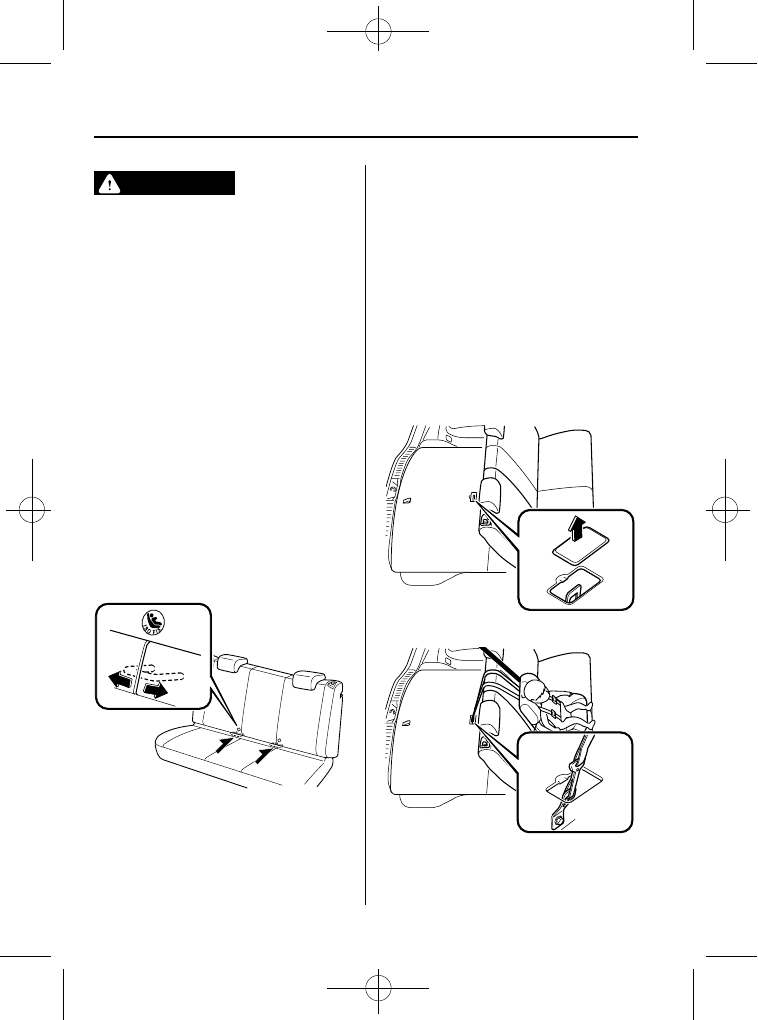Mazda CX-7 (2012 year). Manual - part 4

Black plate (56,1)
WARNING
Use the tether and tether anchor only
for a child-restraint system:
Using the tether or tether anchor to
secure anything but a child-restraint
system is dangerous. This could
weaken or damage the tether or
tether anchor and result in injury.
Always attach the tether strap to the
correct tether anchor position:
Attaching the tether strap to the
incorrect tether anchor position is
dangerous. In a collision, the tether
strap could come off and loosen the
child-restraint system. If the child-
restraint system moves it could result
in death or injury to the child.
1. Make sure the seatback is securely
latched by pushing it back until it is
fully locked.
2. Expand the open seams on the rear of
the seat bottom slightly to verify the
locations of the LATCH lower anchors.
NOTE
The markings above the LATCH lower anchors
indicate the locations of LATCH lower
anchors for the attachment of a child-restraint
system.
3. Secure the child-restraint system using
BOTH LATCH lower anchors,
following the child-restraint system
manufacturer's instructions. Pull on the
child-restraint to be sure both anchors
are engaged.
4. If your child-restraint system came
equipped with a tether, that means it is
very important to properly secure the
tether for child safety. Please carefully
follow the child-restraint system
manufacturer's instructions when
installing tethers.
Anchor bracket location
Tether strap position
2-44
Child Restraint
CX-7_8CG3-EA-11J_Edition1 Page56
Saturday, September 24 2011 10:31 AM